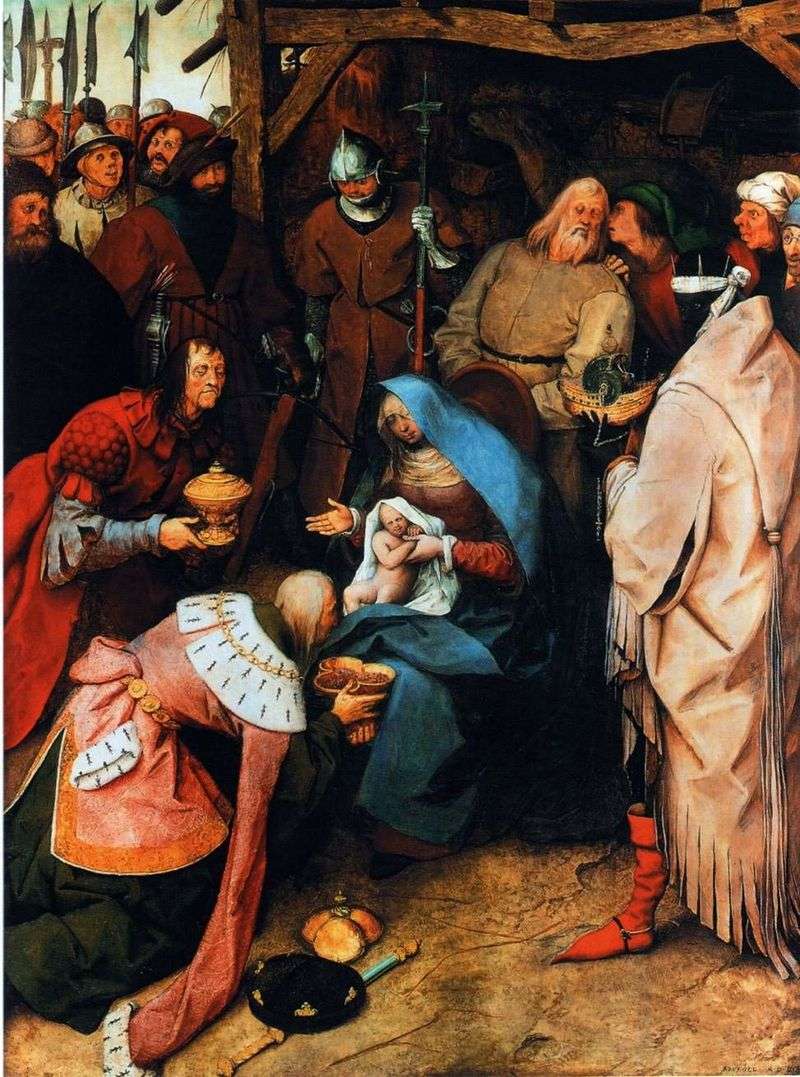
Time to create a picture refers to the period of the Dutch lands – Philip II King of Spain. Peter Bruegel lived and worked in the Spanish Netherlands. While painting the painting, the artist was in Brussels from 1563 onwards. During this period the Dutch society underwent cardinal changes, which was expressed in discontent with the Spanish administration, religious conflicts between Catholicism and the Protestant movement.
Brussels, in which Peter Bruegel lived and worked, becomes the center for the development of revolutionary movements and countermeasures by the Spanish governor Margarita Parma, whose residence was also in this city. All these events could not leave the artist indifferent and he began to write the picture “Adoration of the Magi”, but in his interpretation. The picture was rather coldly received by the Catholic society, as it is full of irony and anti-church content.
The painting mentions the Gospel story about the magi who came from the East to worship the newborn Jesus and express his respect with the gifts presented. In his work, Peter Bruegel decided to move away from the traditional image and convey the joy of the moment. Being influenced by the style of Hieronymus Bosch, he writes a picture that does not convey the joy of the birth of the baby and all those present, including the Virgin Mary, are in sorrow.
Together with Jesus, she is the key figure of the composition, and it was her clothes that the artist painted in a blue color that is cold and is meant to convey sadness. A man in a green kerchief, whispering something to Joseph, who leaned toward him and closed his eyes, reflecting on his face indifference to what was happening. At the entrance to the cowshed and around Mary with the baby, Joseph, the Magi and the black Belshazzar are people and soldiers, on whose faces the artist displayed irony and malevolence.
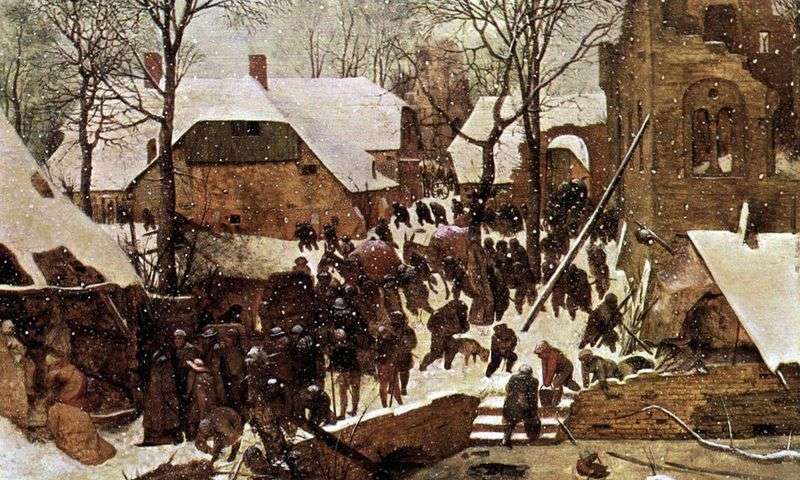 The Adoration of the Magi in the Winter Landscape by Peter Brueghel
The Adoration of the Magi in the Winter Landscape by Peter Brueghel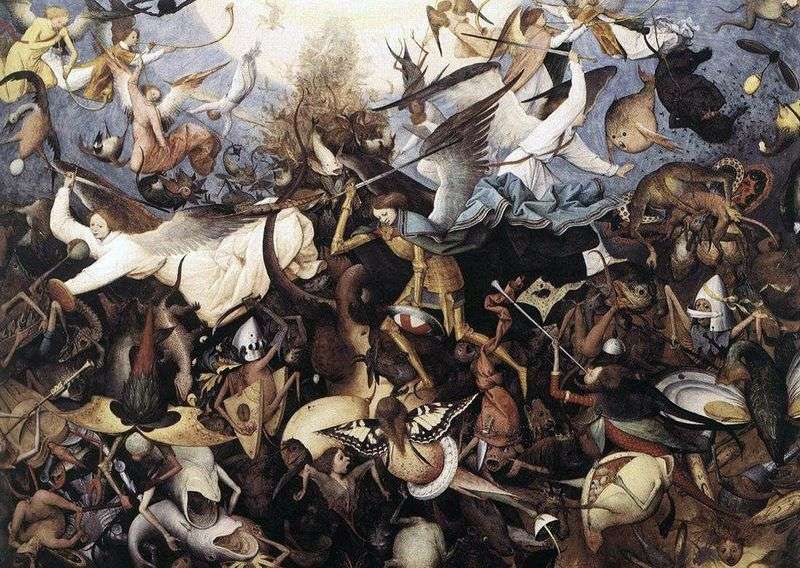 The Fall of the Rebellious Angels by Peter Brueghel
The Fall of the Rebellious Angels by Peter Brueghel Adoration of the Magi by Hans Baldung
Adoration of the Magi by Hans Baldung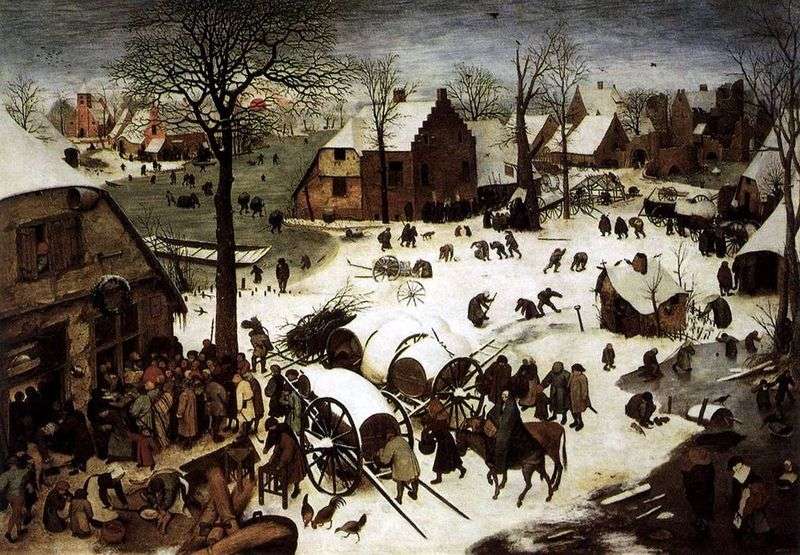 Census in Bethlehem by Peter Brueghel
Census in Bethlehem by Peter Brueghel Adoration of the Magi by Jan Gossaert
Adoration of the Magi by Jan Gossaert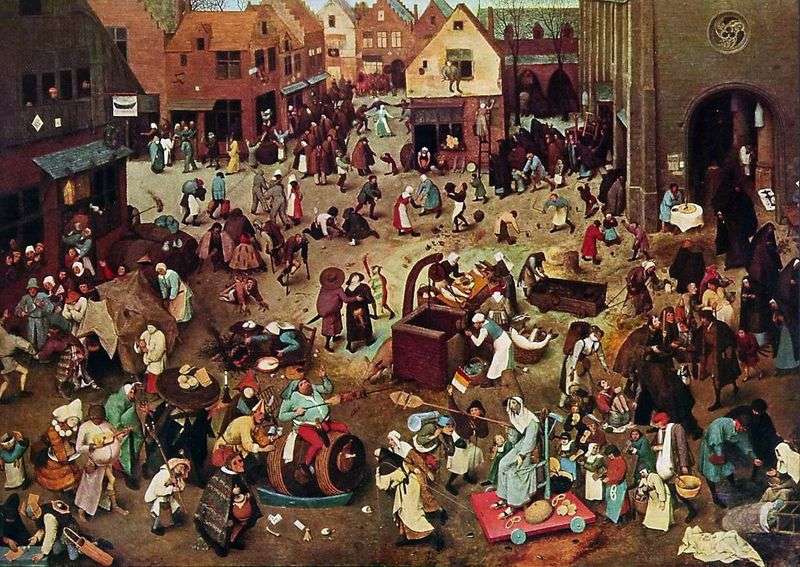 Carnival and Post by Peter Brueghel
Carnival and Post by Peter Brueghel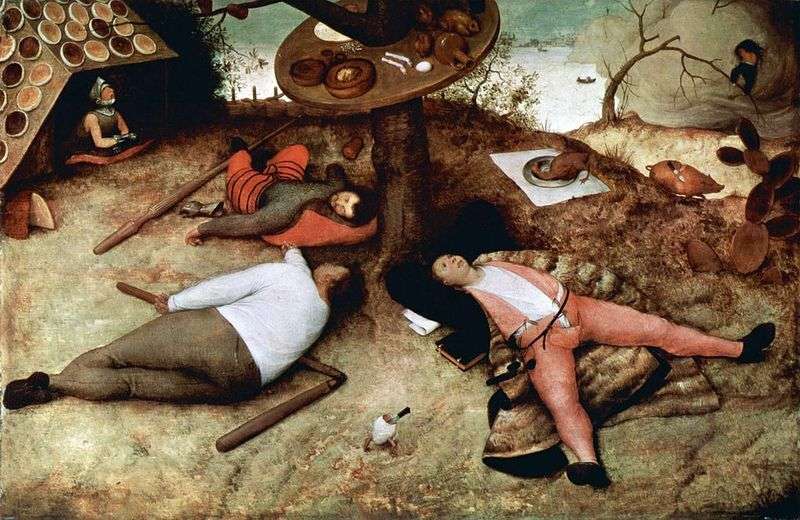 Country lazy by Peter Brueghel
Country lazy by Peter Brueghel Adoration of the Magi by Jacopo Bassano
Adoration of the Magi by Jacopo Bassano